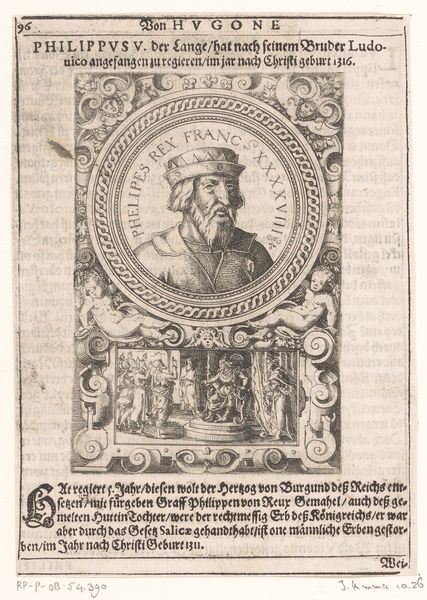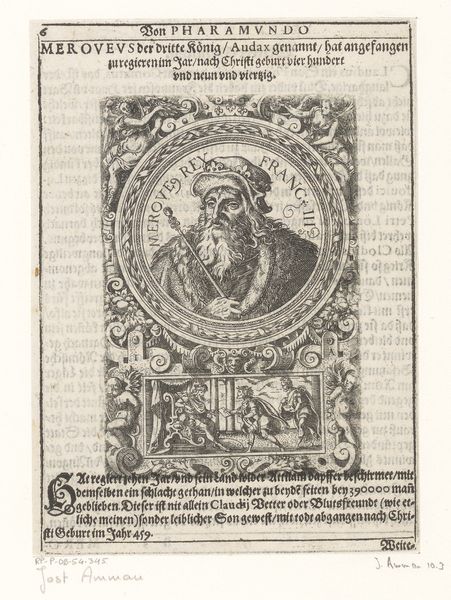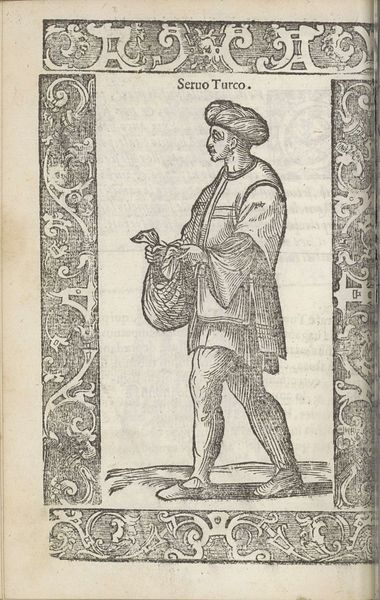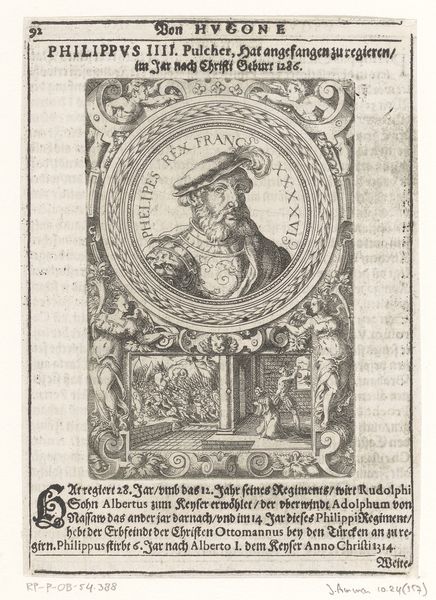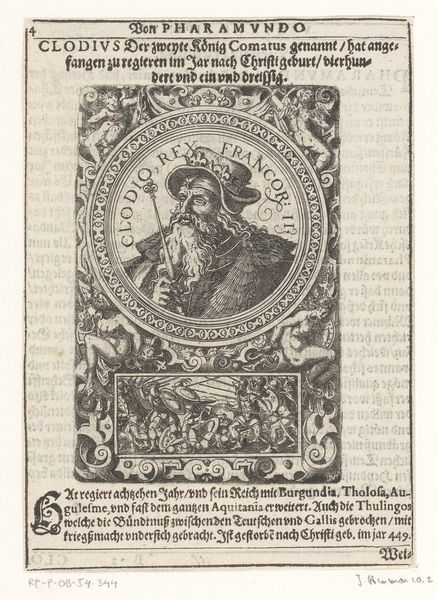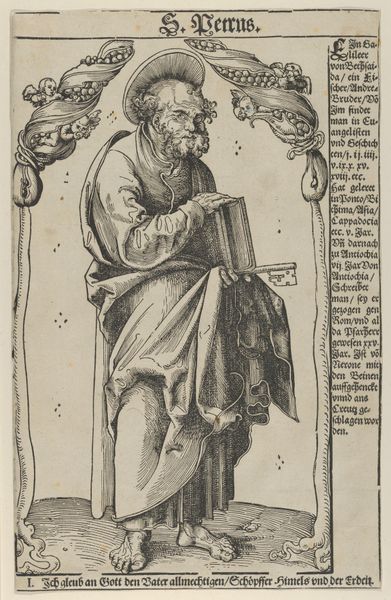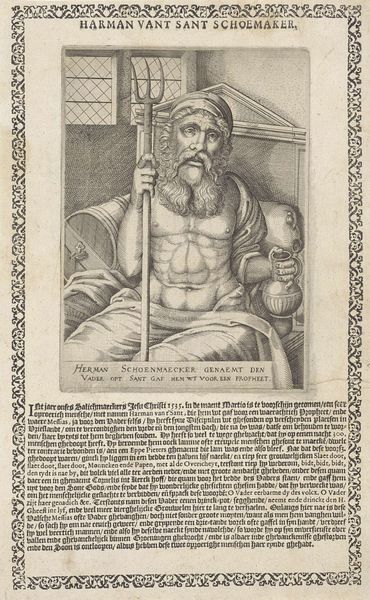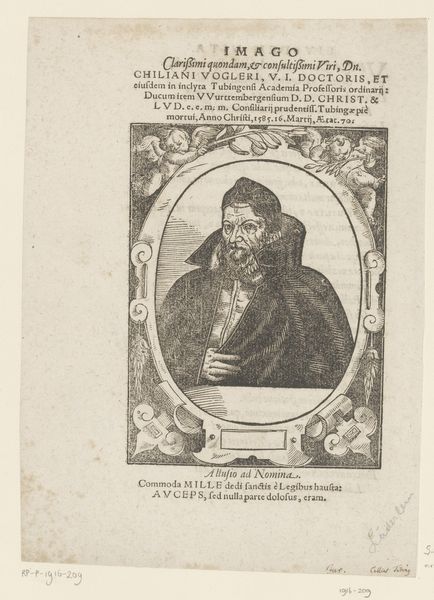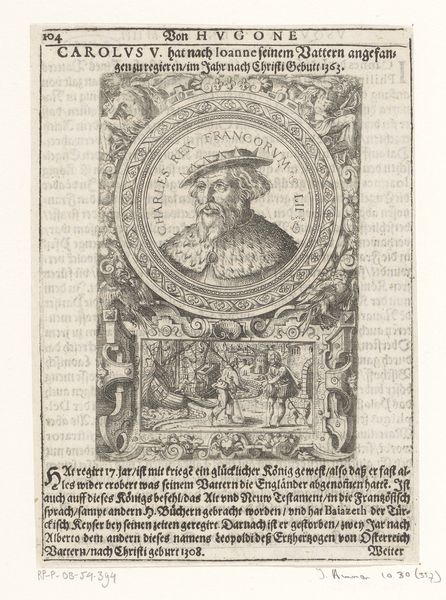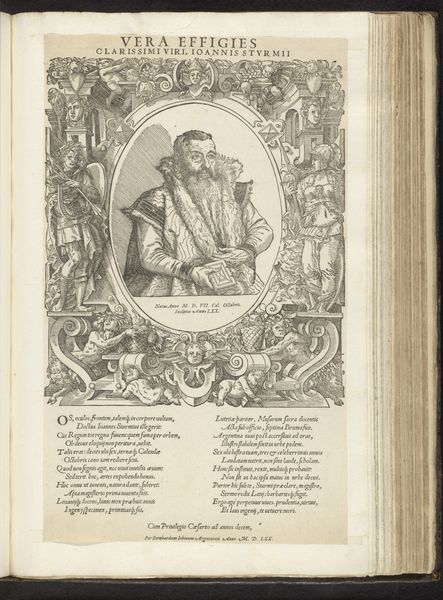
print, engraving
#
portrait
#
dutch-golden-age
# print
#
figuration
#
line
#
history-painting
#
engraving
#
realism
Dimensions: height 158 mm, width 130 mm, height 336 mm, width 256 mm
Copyright: Rijks Museum: Open Domain
Editor: This is a striking portrait of Menno Simons by Christoffel van Sichem I, an engraving created sometime between 1603 and 1624. It's held at the Rijksmuseum. The detail is really captivating, but the surrounding text and ornate border feel almost overwhelming. How do you interpret this work? Curator: From a materialist perspective, the engraving itself is key. Consider the labor involved in its production, the specific tools and techniques used by Sichem, and the social context of printmaking during the Dutch Golden Age. This wasn't simply about creating a likeness, but about mass-producing an image for wider circulation. Editor: So, the "print" aspect is central, not just that it's a picture of someone. I see. What was the role of prints in disseminating information and shaping public opinion? Curator: Precisely. Prints were a relatively accessible medium, a form of popular culture. Sichem's portrait would have circulated among followers of Menno Simons, reinforcing their identity and beliefs, especially important given the challenges they faced. The engraving process also emphasizes the hand-made nature of art in this period - something often lost when considering ‘high art’. Notice the sharp lines, the careful shading; this required skilled craftmanship, labor that is now somewhat abstracted by mechanical reproduction today. How does this impact our understanding of 'art' versus 'craft' here? Editor: I see your point! It kind of blurs the lines between artistry and a kind of manufacturing. So, analyzing this work from a materialist perspective shines a light on the means of production and how that influenced the meaning of the image itself? Curator: Exactly. It challenges the traditional, sometimes elitist, view of art that focuses solely on the genius of the artist, ignoring the socio-economic conditions and the very materiality that made its creation possible. It prompts us to ask: who controlled the means of artistic production and to what ends? Editor: That’s a really fascinating way to look at it. I never thought about prints this way before, considering them more in terms of aesthetics than production and dissemination. Curator: Thinking about art through the lens of its materials and means of production really grounds it in a tangible reality, prompting us to look beyond the surface image.
Comments
No comments
Be the first to comment and join the conversation on the ultimate creative platform.
